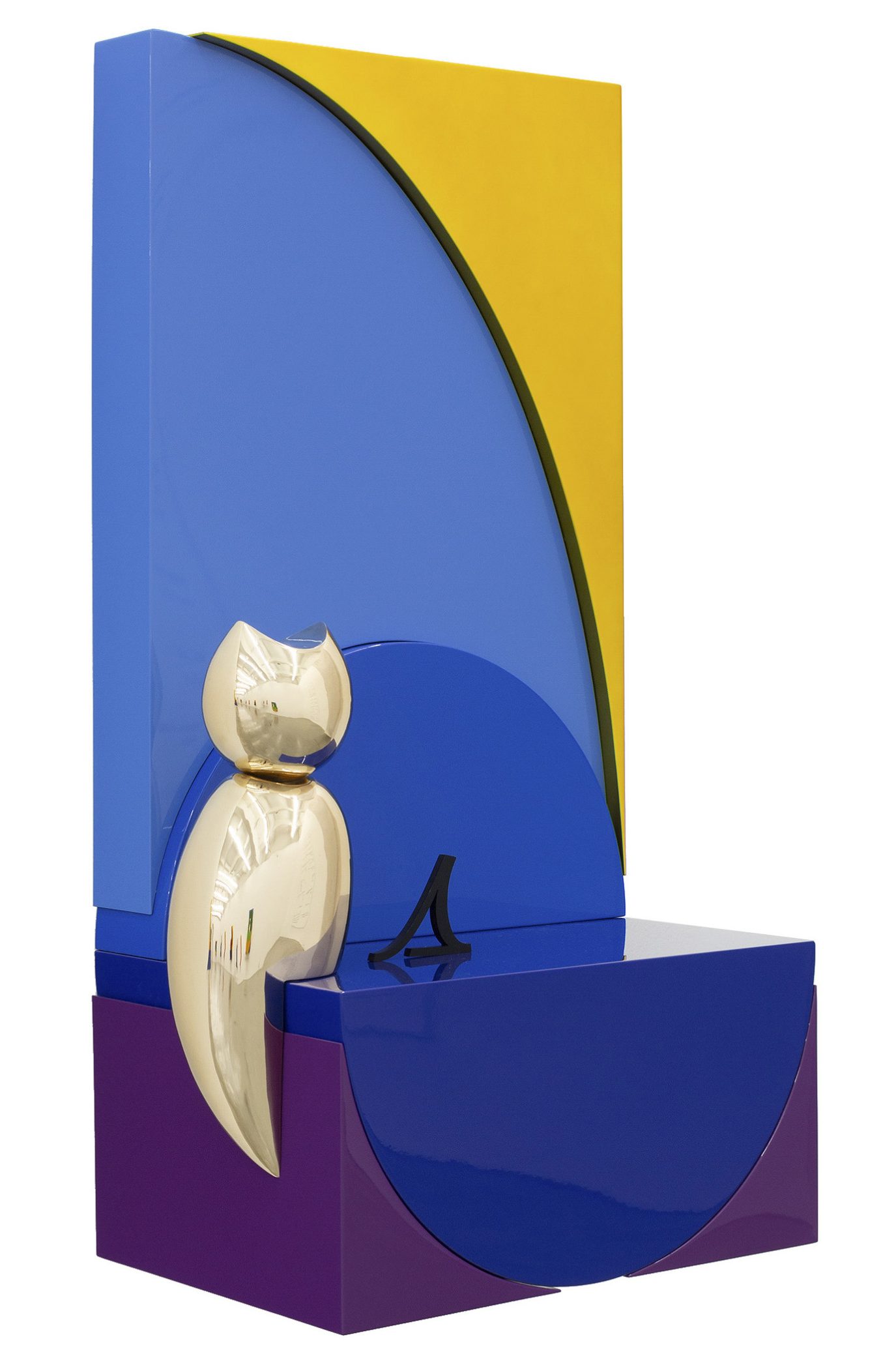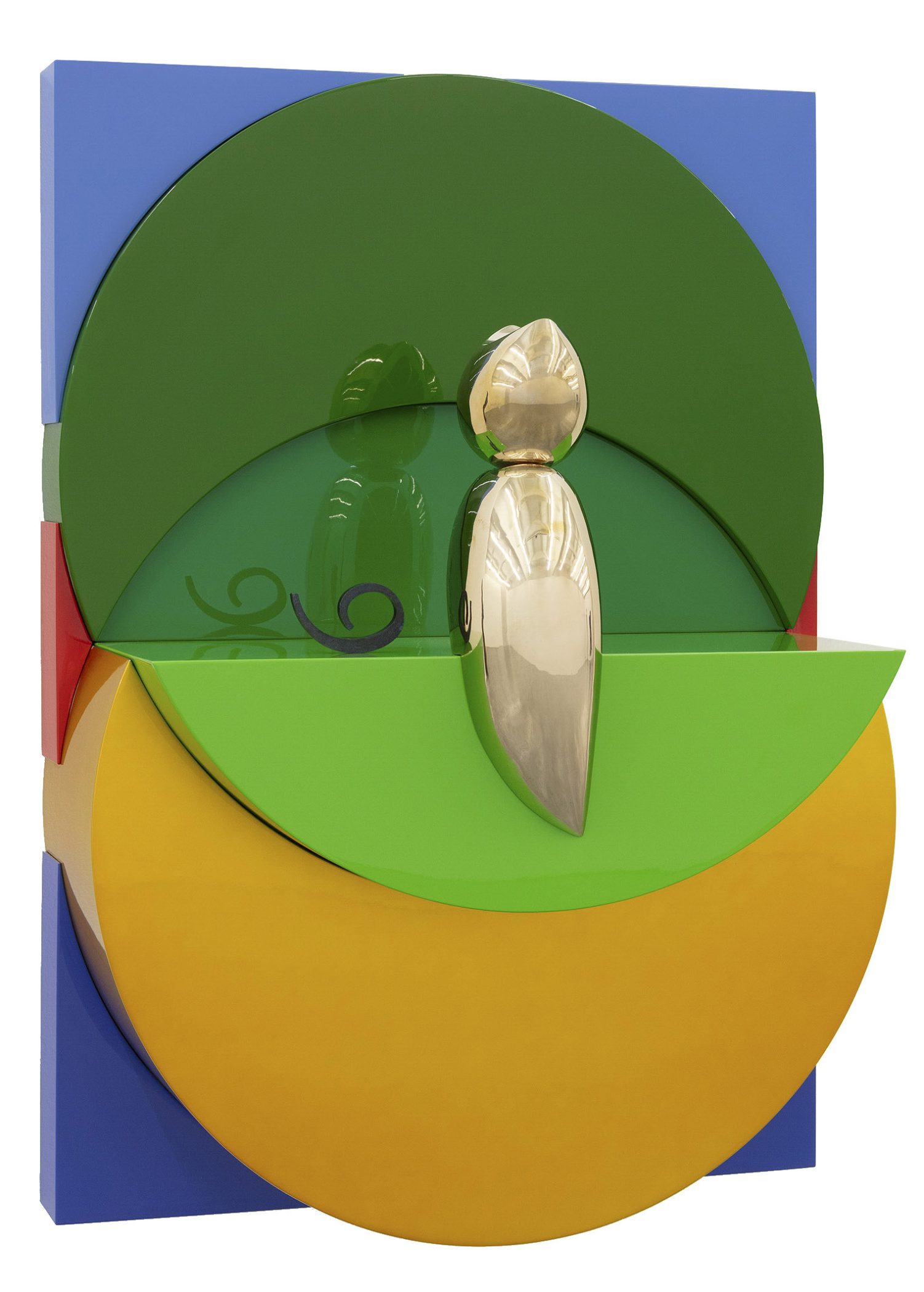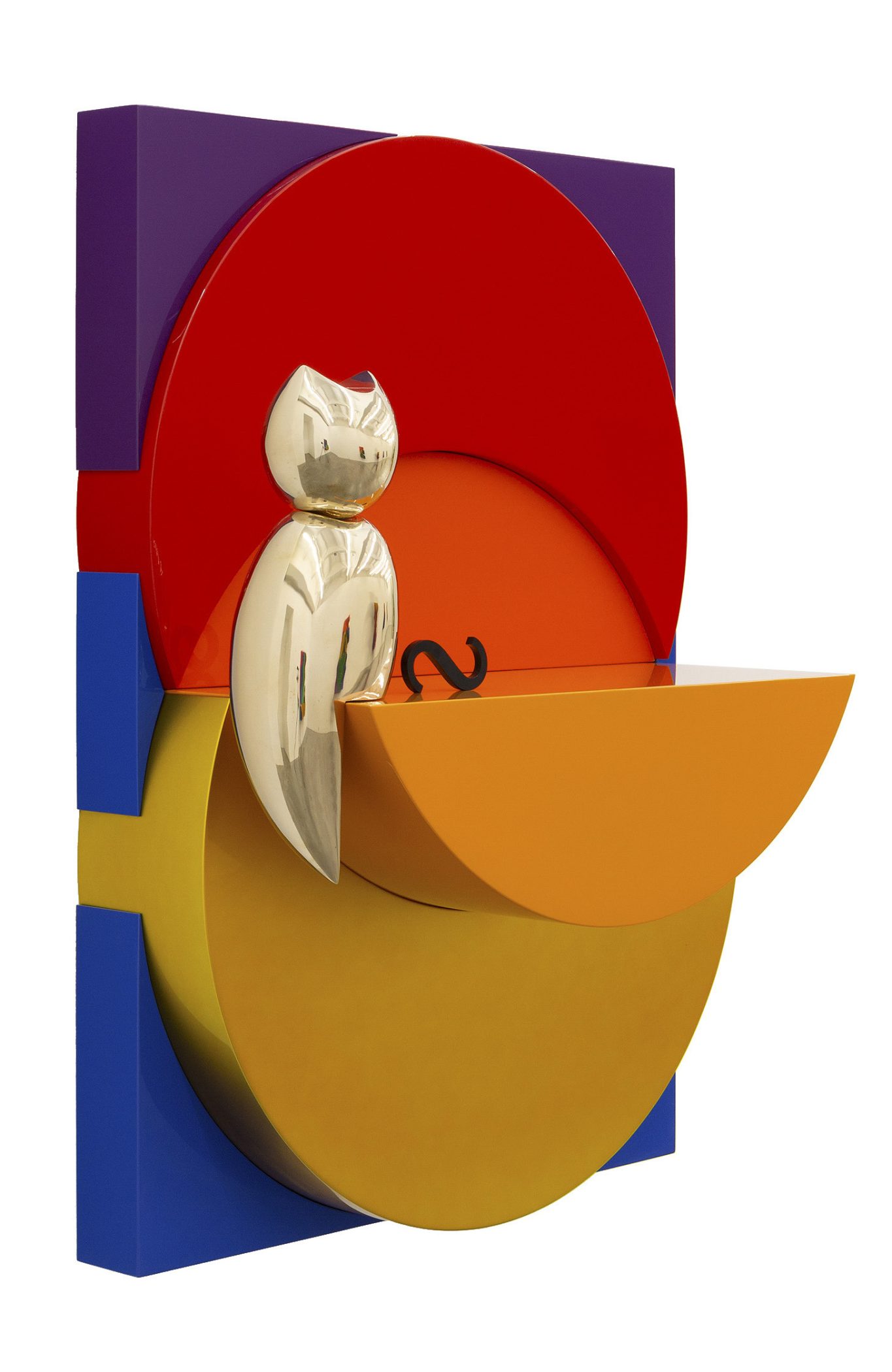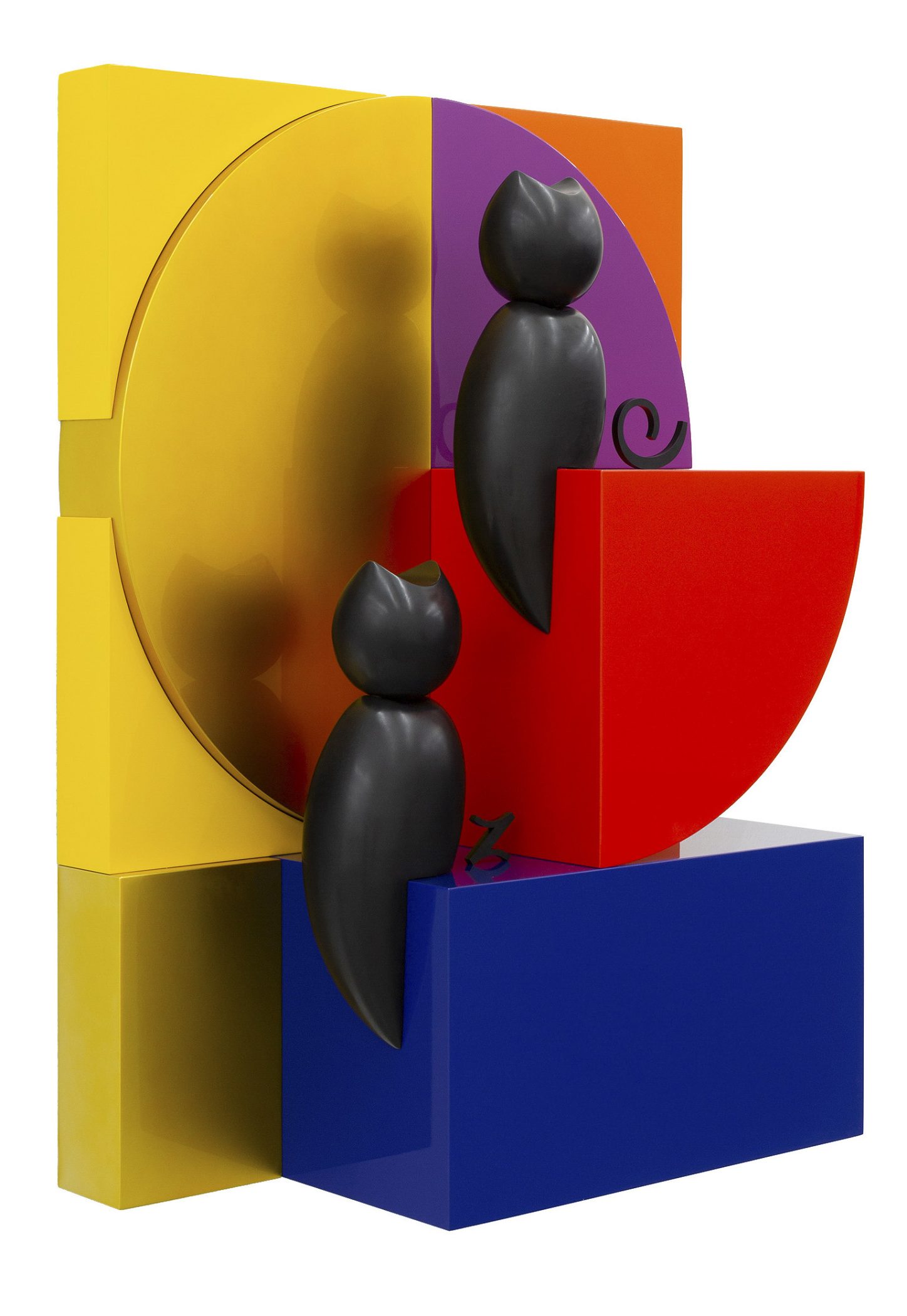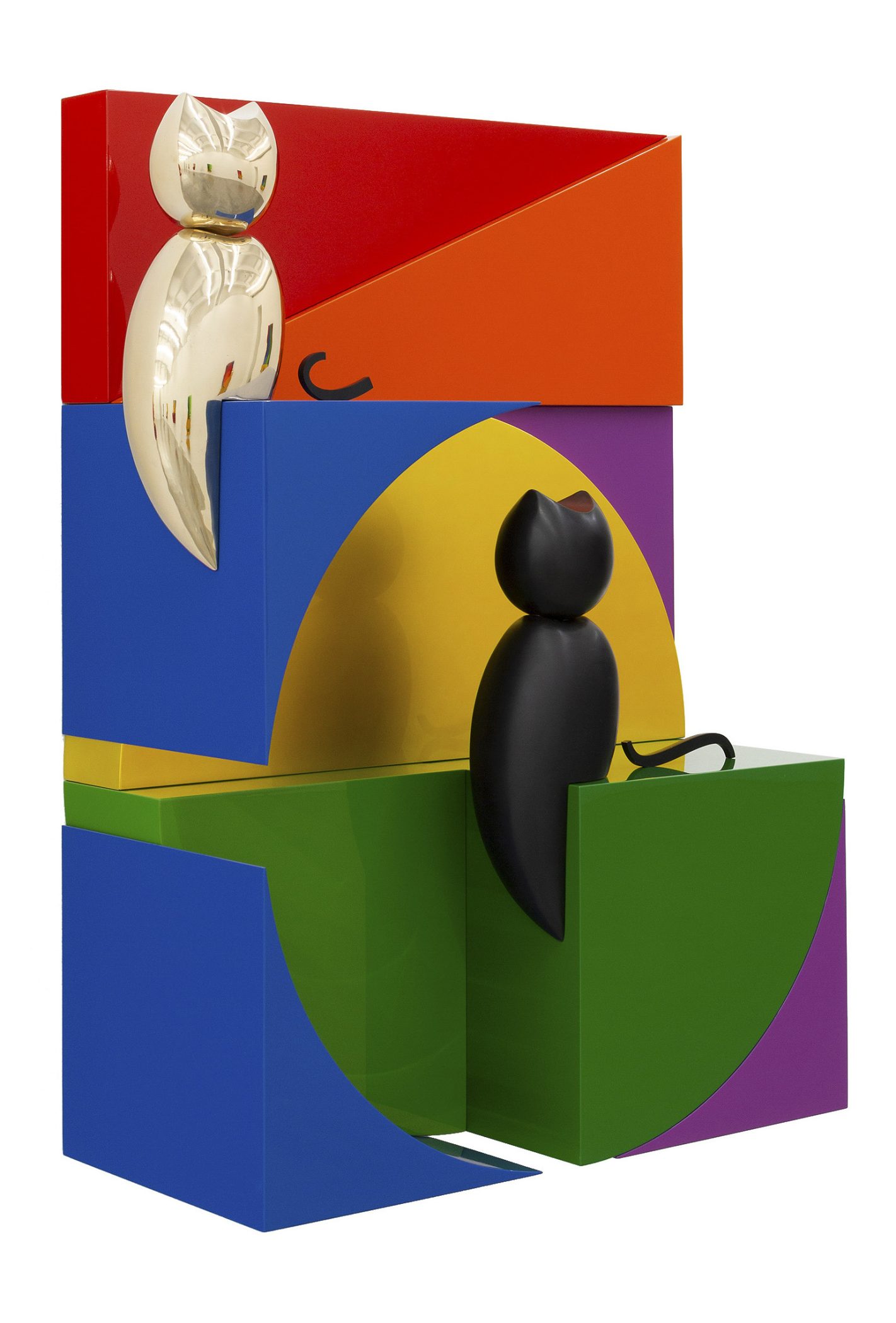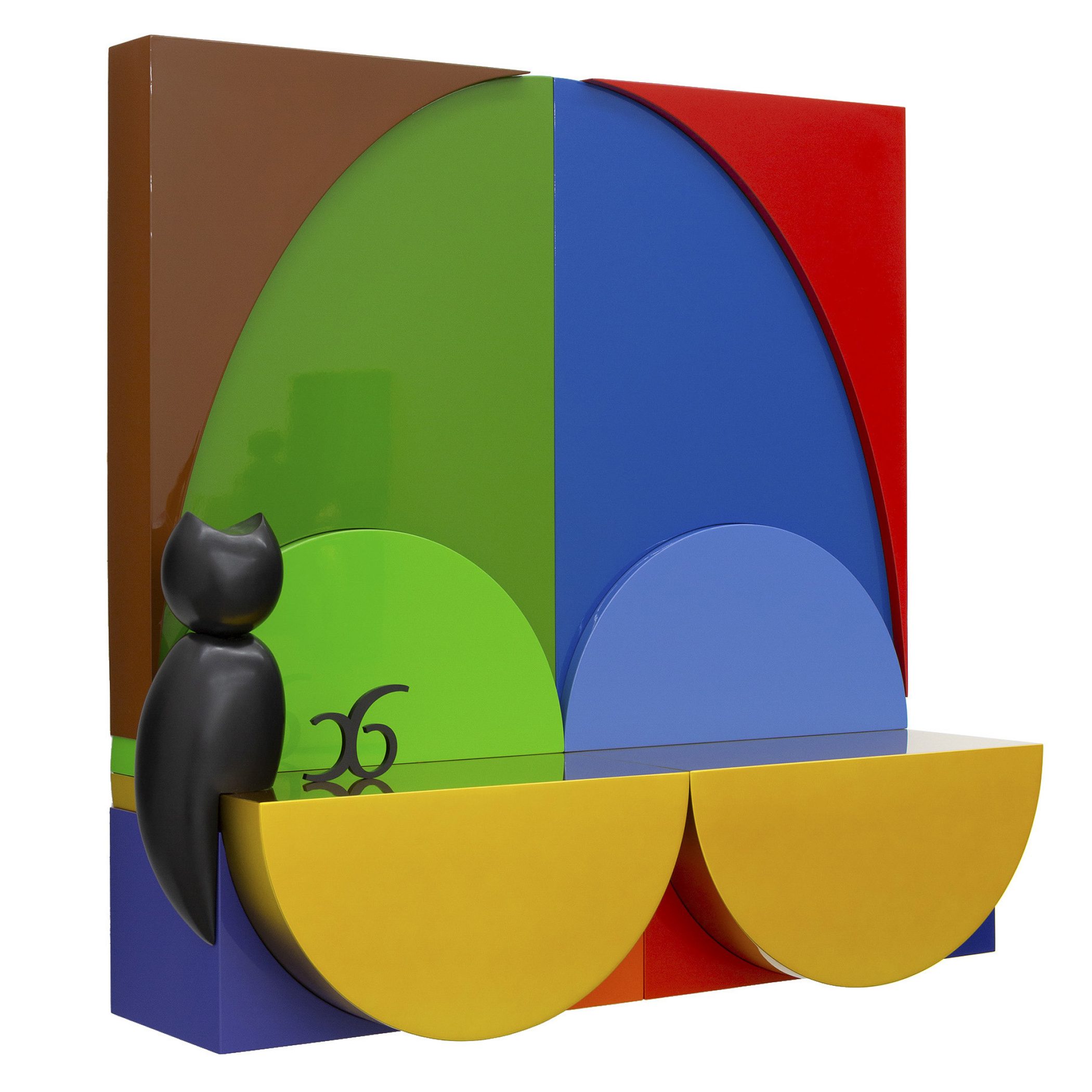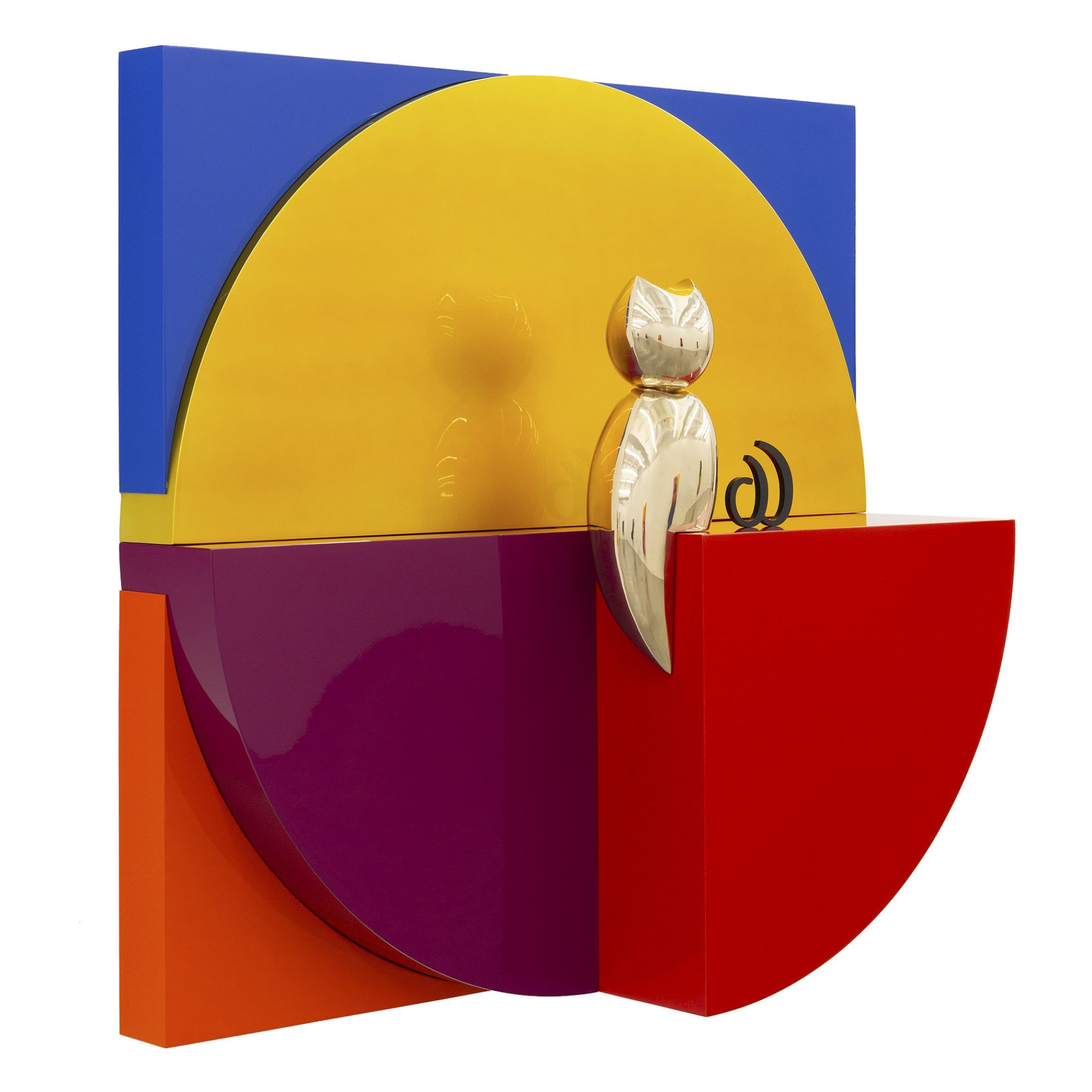Emily Floyd
Chosen by a Cat
5th April – 1st June 2024
Anna Schwartz Gallery
We gaze at the cat – inscrutable, enigmatic, ungovernable, autonomous – and it reflects back our soft blinking affectionate gaze. In Emily Floyd’s new exhibition ‘Chosen by a Cat’, the cat’s simplified and curvaceous form is rendered in shiny patinated bronze. It’s an object with a beguiling, divine, even erotic charge – vibrating with ‘main character’ energy – an impression underscored by its position. Sitting on a shelf, framed by a series of boldly coloured crescent shapes that lead the eye back to the centre, this elegant cat occupies target position. Curled delicately beside it is a petal-like object that asserts an intriguing and surreal presence.
The exhibition draws inspiration from the opening pages of ‘Always Coming Home’, a novel by the famed sci-fi American novelist Ursula K. Le Guin in which the author situates the characters in relation to the animals and pets they live with. Le Guin’s story of a post-apocalyptic society centres on the survivors known as the Kesh people. The author – admired for her ability to build imaginary worlds – engages in a form of speculative anthropology inventing, among other details, a complete alphabet and language for the inhabitants. Floyd referenced this alphabet in an earlier work from 2017 for which she designed a typeface based on the Kesh alphabet. The petal-like object resting on the shelf is one of its letterforms.
Emily Floyd continues to develop her interest in geometry as an organising principle that lends shape, dynamism, and volume to the work. It is augmented by the artist’s distinctive and identifiable colour palette of vivid primary colours. In this work, she combines sculptural elements with the rectilinear dimensions of a painting.
Post humanism, a strand of philosophy that views humans as co-evolving with other life-forms, environment and technology, informs Floyd’s current work. Alongside this enquiry, the artist has drawn on political theory, social movements and pedagogy in thinking and shaping work in the past. In a myriad of ways Floyd’s art practice worries this question of how we create meaning and concepts, and the role of language and texts in shaping culture and society, more broadly.
From ‘Art Collector Magazine,’ April 2024 by Anna Zagala
